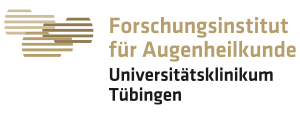Wissinger Lab
Molecular Genetics Laboratory
Home » Labs » Wissinger Lab » Members » Pietro De Angeli
Pietro De Angeli
| Surname | De Angeli |
|---|---|
| First name | Pietro |
| Position and Title | PhD student |
| Project | CRISPR/Cas9 gene editing for excision and rescue of deep-intronic mutations in ABCA4 |
Business address
Molecular Genetics Laboratory
Institute for Ophthalmic Research
Centre for Ophthalmology,
University of Tübingen
Elfriede-Aulhorn-Strasse 7
D-72076 Tübingen,
Germany
Phone: +49 (0)7071 29-80706
Research background and scientific interests
I am a molecular biotechnologist by training with strong focus on translation research. During my university studies at the University of Urbino, I worked on engineering metabolic pathways with the final aim to establish an enzyme replacement therapy for creatine deficiency. Just before graduating from my Master, I joined the Wellcome Trust Sanger Institute in the UK, where I became fascinated by how easily the human genome can be manipulated by the CRISPR/Cas system. There, I worked on CRISRP-based high-throughput screens to unravel how mutational profiles are determined. Without doubt, I then decided to want to focus on genome editing for my doctoral studies. Indeed, I joined the University Hospital of Tübingen for my doctoral studies, focusing on the design of CRISPR/Cas approaches to rescue aberrant splicing due to pathogenic deep-intronic variants in ABCA4, the gene responsible for Stargardt disease. Now, my goal is to establish genome editing strategies that are highly translatable into potential therapeutics. The prioritized conditions I am working on are Retinitis pigmentosa (RHO, USH2A), Stargardt Disease (ABCA4), and autosomal dominant cone-rod retinal dystrophy (GUCY2D).
Project descriptions
CRISPR/Enhanced-Deletion Cas9-mediated allele-specific targeting of the rhodopsin gene: a novel mutation-independent approach to treat RHO-linked autosomal dominant Retinitis pigmentosa.
Inherited retinal dystrophies (IRD) are a heterogeneous group of genetic disorders with an estimated prevalence of 1 in 3,000-4,000 individuals. Retinitis pigmentosa (RP) is the most common subform of IRD and characterized by night blindness and progressive degeneration of rod photoreceptors which leads to loss of peripheral vision, and eventually blindness in advanced stages. Mutations in the RHO gene are the most common cause of adRP. The Human Genome Mutation Database lists 247 likely disease-causing RHO variants, the vast majority (>200) being missense variants associated with adRP. Since dominant RHO mutations typically act as gain-of-function or dominant-negative mutations, we are applying novel bioengineered CRISPR/Cas genome editing variants to selectively disrupt RHO mutant alleles while preserving the integrity of wild-type allele. Specifically, different frequent heterozygous SNPs in cis with the specific mutations are targeted to disrupt the activity of mutant RHO. On the whole, the cumulative frequency of the selected SNPs is estimated to be present in >40% of the patient population, enabling to address a large sub cohort of RHO-adRP cases.
Rescuing the common deep intronic USH2A variant c.7595-2144A>G by single gRNA and AAV-packageable enhanced-deletion RNA-guided endonucleases.
Usher syndrome is characterized by hereditary deafness and subsequent blindness. Different forms of Usher syndrome are caused by different mutations in various genes, one of which is the USH2A gene. A deep intronic mutation (c.7595-2144A>G) in this gene is found in up to 4% of Usher syndrome patients. It is known to result in incorrect messenger RNA and consequently no functional protein can be formed. Within this project, we want to rescue this mutation by genome editing applying a novel bioengineered gene scissor (CRISPR/EDCas9) to restore correct RNA maturation which will lead to rescue of correct protein synthesis, hereby reverting the Usher syndrome cellular disease phenotype.
Mutation-independent splicing rescue of clustered deep-intronic variants in ABCA4
ABCA4 is the gene that when mutated is causative for the most common form of juvenile macular degeneration, namely Stargardt Disease. The mutation spectrum is highly heterogenous, which also includes deep-intronic variants. Two hot spots of deep-intronic variants have been characterized in intron 30 (c.4539+2001G>A, c.4539+2028C>T and c.4539+2064C>T) and intron 36 (c.5196+1013A>G, c.5196+1056A>G, c.5196+1134C>G, c.5196+1137G>A and c.5196+1216C>A). By implementing the novel Enhanced-Deletion Cas9 variant, common missplicing-inducing sequence features of the two clustered are targeted by single gRNA, resulting in splicing correction. Such a design allows to address multiple pathogenic deep-intronic variants by the same strategy.
Publications
- Allen F, Crepaldi L, Alsinet C, Strong AJ, Kleshchevnikov V, De Angeli P, Páleníková P, Khodak A, Kiselev V, Kosicki M, Bassett AR, Harding H, Galanty Y, Muñoz-Martínez F, Metzakopian E, Jackson SP, Parts L. Predicting the mutations generated by repair of Cas9-induced double-strand breaks. Nat Biotechnol. 2018 Nov 27. doi: 10.1038/nbt.4317.
 Pietro De Angeli
Pietro De Angeli

